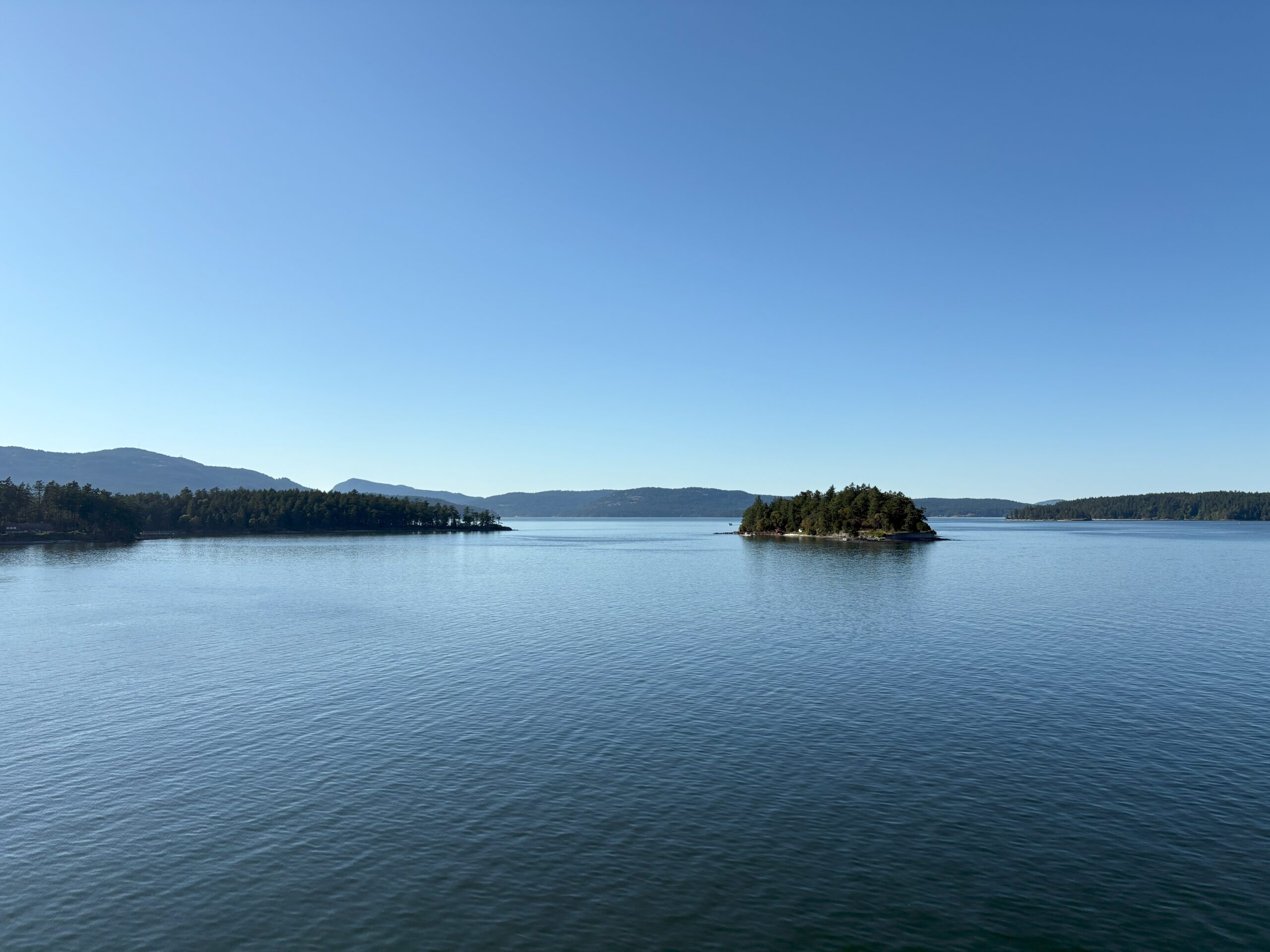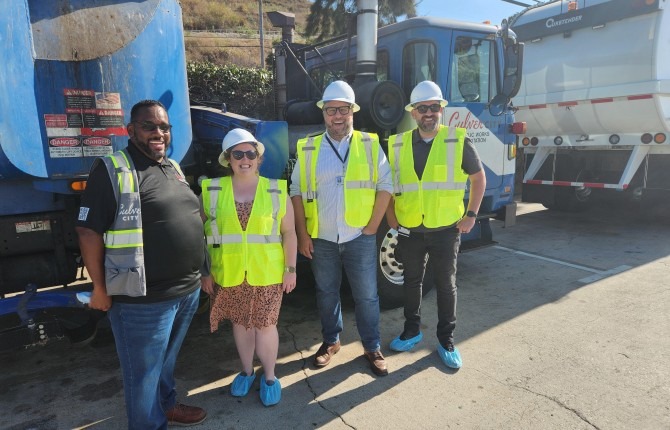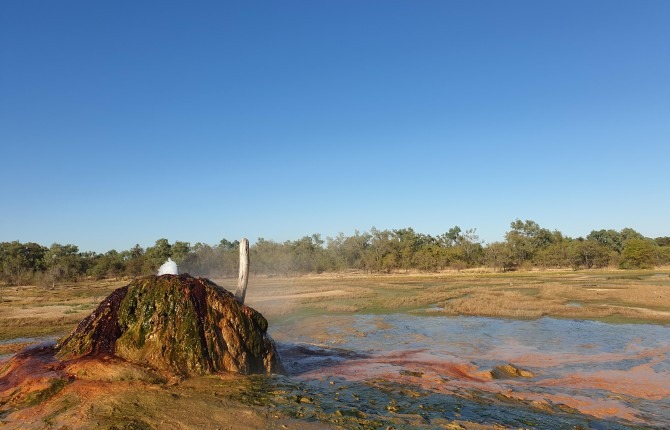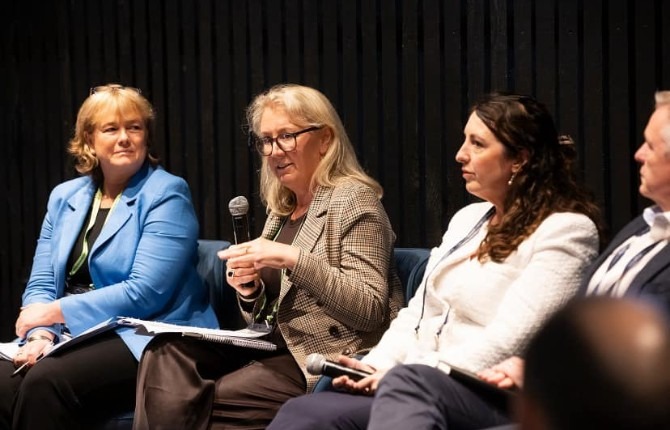Contributed by Morag Taimalietane, Principal Advisor Customer and Community at Kāpiti Coast District Council. Morag attended an Overseas Manager Exchange, supported by Marsh, to British Columbia, Canada in June 2025.
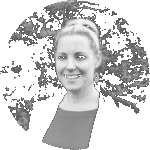
“Community-led development” is a term that is becoming more common place in local government as we look at how we design and deliver our activities and services to meet the growing and diverse needs of our communities. Community-led development (CLD) provides an approach for empowering communities to address issues from the ground up, through collective action and local decision-making. National and international evidence shows that local solutions designed with communities are more effective and sustainable than top-down programmes. In Kāpiti, our Connected Communities team supports community-led development, enabling our communities and neighbourhoods to address inequities by co-designing solutions with those most affected. This focus is helping to ensure that our Council investment is targeted, culturally responsive, and meets the needs of diverse (and underserved) communities.
The purpose of my Taituarā Overseas Manager Exchange was to gain insights into international models of community-led development. I exchanged with Bob Payette, Chief Administrative Officer for the District of Metchosin – a municipality of around 5,000 residents on Vancouver Island. My first stop on the exchange was its neighbouring city, Victoria, the capital of British Columbia (B.C). With the city built around its beautiful waterfront, Victoria instantly reminded me of Wellington.
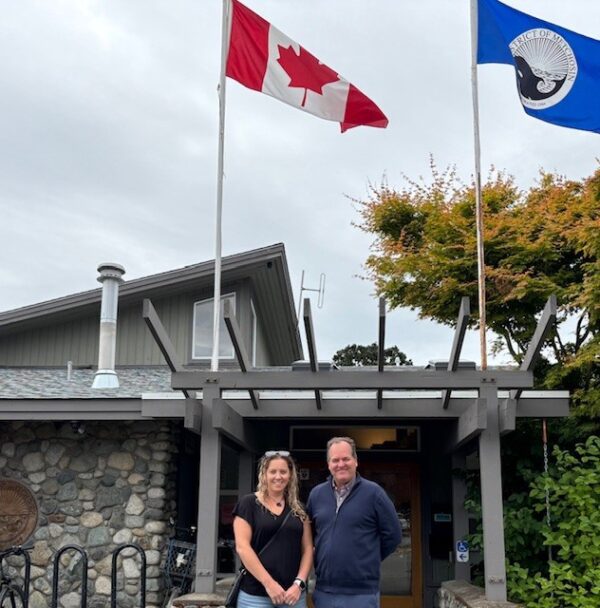
In downtown Victoria, it didn’t take me long to come across a space shaped by the work of FED Urban Agriculture – a charity dedicated to cultivating a resilient, sustainable, and well-fed community through urban agriculture and genuine community engagement. Working with a broad network of partners – including local and provincial governments (the City of Victoria and the Government of British Columbia), non-profits, and landowners – FED takes a ground-up, collaborative, and inclusive approach to revitalising underutilised urban spaces into thriving growing hubs.
These spaces produce fresh, nutritious vegetables for underserved communities but also serve as platforms for education and empowerment. FED’s commitment to community-led development is evident in its belief that lasting change begins with informed and empowered people and communities.
One of FED’s most innovative initiatives is the FED Urban Farm, where modular geotextile grow bags have been used to transform a contaminated brownfield site into a urban growing space. The space operates as both a social enterprise and a demonstration site, with the farm producing fresh vegetables for the community, supporting local restaurants, educating the public, and showcasing sustainable food systems in action.
From Victoria, Bob and I travelled to Kelowna for the LGMA Conference – an eight-hour journey. The drive made me appreciate the sheer scale of Canada. I also saw the impact of wildfires on both the landscape and local communities, which helped me better understand the critical role that local governments in B.C. play in managing Fire Services and responding to these challenges.
Kelowna, a city on the lands of the Syilx Okanagan people, was a beautiful space to visit for the LGMA conference – set in the Okanagan Valley, surrounded by mountains, vineyards and the Okanagan Lake. The LGMA Board and staff were incredibly welcoming, ensuring I was included in a wide range of activities that gave me an authentic experience of Kelowna.
Invited to bring greetings from Aotearoa, I was honoured to introduce myself through my pepeha and share insights from the Kāpiti Coast. I spoke to the importance of manaakitanga – the value of hospitality, care, and respect – and presented LGMA President Doug Holmes with a pounamu, explaining its significance as a taonga within te ao Māori.
The conference was outstanding and gave me a great opportunity to connect with people from across B.C who are passionate about local government and happy to share their experiences with community-led development – both the challenges they’ve faced and the opportunities it’s created for their councils and communities. I am grateful to have made connections that have continued since returning to Aotearoa.
A standout speaker from the conference was the Hon. Jody Wilson-Raybould, a First Nations leader and former Minister of Justice and Attorney General of Canada. During her keynote address “True Reconciliation: How to Be a Force for Change,” Hon. Wilson-Raybould spoke of her upbringing within the Kwak’wala-speaking peoples, the importance of culture being handed down through generations, and how to bring perspective to leadership – emphasising the strong and immediate need to call out behaviour which is based on the belief that power is truth, rather than truth is power. A standout session was delivered by the City of Kamloops – Fostering a Culture of Belonging. The session focused on strategies they’ve implemented to promote equitable opportunities and encourage diversity and inclusion – from removing barriers in their recruitment process, through to offering workplace initiatives such as monthly ‘lean in’ sessions. Both Hon. Jody Wilson-Raybould and the Kamloops session emphasised the need for systemic change and breaking down barriers to empower communities through inclusion.
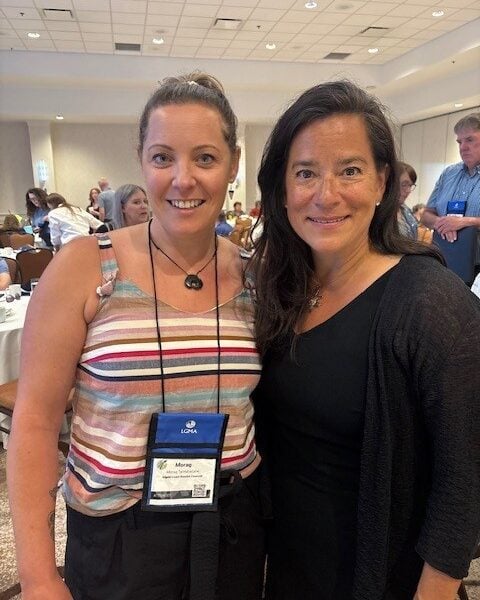
After the conference, Bob and I returned to Vancouver Island, where I spent time in Sooke, a district municipality located on the Island’s southern tip. While there, I met with Gail Scott, the District of Sooke’s Community Economic Development Officer, whose passion for community-led development was inspiring. Gail highlighted the ongoing challenge of Sooke being classified as “urban” due to its proximity to Victoria, despite its rural character and infrastructure – resulting in Sooke being excluded from accessing rural-specific funding and federal support. Gail has been advocating for a reclassification, pointing to the Gulf Islands as a precedent – these communities were also classified as “urban” but have successfully secured exemptions.
Sooke’s efforts to boost its community’s resilience has led to a focus on building regional and international CA-US cross-border partnerships. Gail highlighted their involvement in the Juan de Fuca Corridor program – a partner-led project that is supported by Destination Canada as part of their Tourism Corridor Strategy Program. Its focus is on creating sustainable coastal tourism to enhance community well-being and safeguard natural ecosystems – and by linking up communities with similar strengths along the West Coast (Sooke) Highway, the people who really care about the Corridor’s future get to take the lead in shaping their local economy.
In my conversations with Gail, it was clear she’s deeply committed to long-term, collaborative growth, with her work reflecting a broader push for inclusive, community-led economic development.
That sense of local leadership and connection was just as strong during my visit to the District of Metchosin, where Bob is the CAO. The team there was incredibly welcoming – and I was lucky to meet Cat, the official fire station cat (she is listed as a Member on their website). Cat accompanied me to the Council meeting where the community was actively engaged in a discussion about purchasing land for a new fire station. It was inspiring to see such strong local participation and genuine interest in shaping the future of their community.
From there, I left Vancouver Island and caught the ferry to Vancouver City, passing through the Gulf Islands (image below) that Gail and I had spoken about – the islands that had been classified as ‘urban’. It really drove home how a policy decision made at the provincial level can feel completely out of touch when viewed from the ground, at the community level.
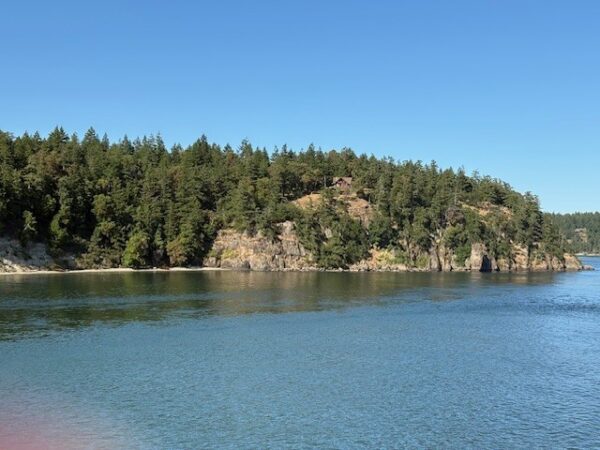
In Vancouver I met with Erika Cedillo, Director of Public Policy & Programs at Inclusion BC, to discuss the transformative work they’ve led through their Community-Led Collaboration Project. Inclusion BC is a federation of organisations dedicated to inclusions and equal opportunity for all people, of all ages, in all areas of life. Their Community-Led Collaboration Project was formed in response to a need to inform how the Ministry of Children and Family Development deliver services through their Children and Youth with Support Needs program. The initiative engaged over 2,000 people across 23 communities in B.C, with the goal of informing changes to supports and services for children and youth with disabilities and support needs – from a community development perspective.
At the heart of the project is a belief that solutions must be rooted in communities and the young people within them. The approach was guided by principles of collaboration, community-driven change, reconciliation and decolonisation, transparency, and timeliness. Erika emphasised the importance of advocating with people and communities, not for them, and how strong relationships are the key to driving meaningful change.
The project focused on building local teams, followed by collaborative efforts to engage communities – especially those historically excluded. Communities were empowered with grants to lead their own engagement efforts, supported by a Community Engagement Guide. This trust-based model allowed over 130 community organisations to design and implement locally relevant strategies, building on their existing strengths and developing new connections.
The engagement process was thoughtful and trauma-informed, with quieter spaces and onsite counselling available to support participants. Erika spoke about how they purposefully asked simple questions to provide the space for complex, meaningful responses. The team took great care in collecting stories, clearly communicating what could and couldn’t be done with the information shared – reflecting a sense of responsibility.
The Community-Led Collaboration Project not only identified key pain points, trends, and barriers, but also empowered communities to become catalysts for change. Each participating community developed its own report, including an action plan that reflects its unique needs, priorities, and context. Collectively, these efforts contributed to a shared vision for all children and youth, supported by 11 calls to action with targeted recommendations to activate that vision. These insights have been further developed into position statements which have been presented to the Minister of Social Development and Poverty Reduction and the Minister of Health by Inclusion BC, to advocate for movement on the relevant calls to action.
Erika’s passion, intelligence, and empathy were clear throughout our conversation. Hearing her speak about Inclusion BC’s history, the journey of the Community-Led Collaboration Project, and her hopes for the future was the highlight of my exchange experience.
Reflecting on my Taituarā exchange experience, I believe there are several key insights that could strengthen authentic community-led development within Aotearoa’s local government sector. However, to implement these effectively, we need to look at our systems, the skills we prioritise, and how we enable staff with the time and support required to engage meaningfully with our communities.
1. Community-Led Development Works Best When It’s Truly Community-Driven
The most successful initiatives were those that started within the community itself, with government agencies acting as supportive partners rather than leading the process. Giving communities trust-based funding – like grants with fewer strings attached – made a big difference, allowing people to take the lead, try new ideas, and create change in ways that worked for them.
2. Indigenous Engagement Must Be Genuine and Respectful
Working well with Indigenous communities means building real relationships – ones based on respect and listening. It’s not about fitting them into our timelines or agendas but meeting them where they are. When Indigenous voices lead and cultural expression is front and centre, the outcomes are far more meaningful.
3. Success Is Multi-Dimensional
Success isn’t just about money or numbers. Communities looked at things like cultural preservation, accessibility, and overall wellbeing. What mattered most was that they got to define what success looked like for them – and those goals were genuinely supported.
4. Relationships Are the Foundation
At the heart of every successful initiative were strong, trusted relationships. When people and organisations worked together across sectors, they built inclusive, resilient programmes that could grow and adapt over time.
5. Vision and Outcomes Need time and Space to Evolve
Community-led projects weren’t static – they changed as communities gave feedback and their needs shifted. Progress was tracked through conversations, feedback, and planning, with a strong focus on showing the social value of the work.
6. Diverse Skills Are Essential
The teams behind these projects needed a mix of skills – facilitation, planning, cultural awareness, and empathy. Leadership training focused on things like resilience, connection, and being able to work through complexity, which made a big difference.
7. Advocacy and Funding Go Hand-in-Hand
Stories from the community, backed by solid data, were powerful tools for advocacy. They helped secure funding and support from both local and central government. Showing the real benefits of community-led development was key to getting people on board.
Across Aotearoa, our communities are facing a range of social challenges. Issues like poverty, rising living costs, housing affordability, and access to healthcare are affecting many aspects of daily life and overall wellbeing. These impacts are not felt equally – Māori and other underserved communities often face additional barriers, many of which are deeply rooted in historical and systemic inequities.
My Taituarā Overseas Managers Exchange reinforced my belief that community-led development has real potential to address the social challenges we face in Aotearoa. As we rethink how we design and deliver services to meet the growing and diverse needs of our communities, it’s clear that recognising and respecting the collective knowledge and resources within those communities is key. By doing this, we can build leadership, strengthen resilience, and create sustainable solutions that shape a better future. However, it requires active listening, strong relationships, and a commitment to empowering communities to lead in ways that reflect their values, histories, and aspirations.
Across British Columbia, I saw firsthand the complexity, courage, and care it takes to create spaces where communities are not just consulted, but genuinely driving change. I’m grateful to Taituarā and Marsh for the opportunity to take part in this exchange, and I hope the insights I’ve gained will be useful to others across the local government sector.

